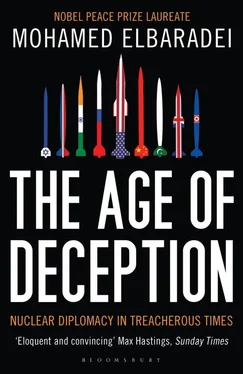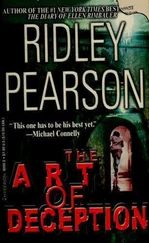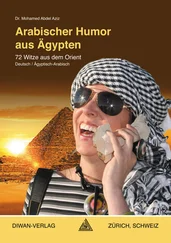The response came grudgingly, piecemeal. Iran gave Agency inspectors access to Kalaye but refused to allow samples to be taken. Eventually they relented, and inspectors were permitted to return and take environmental samples using “swipes”—small squares of cloth wiped over selected surfaces. The inspectors noted that the facility had been modified considerably in the months since their first visit and worried that the changes might affect the accuracy of their analysis. But when the swipes were analyzed in Member State laboratories (using double-blind samples to mask the origin), the results were definitive: the spectrum of enriched uranium particles in the samples demonstrated that nuclear material had been used in the centrifuge testing. Iran was caught, dead to rights.
Little by little the story began to change. Despite the AEOI’s claims that their centrifuge program was indigenous, IAEA centrifuge experts observed a strong resemblance to European designs. When confronted with the results of samples that had also been taken from the pilot centrifuge facility at Natanz—which showed the presence of low-enriched and high-enriched uranium particles—the AEOI said that components had been imported from abroad, and speculated that the particles had come from contaminated parts. In fact, we would find that nearly all of Iran’s centrifuge technology had been imported from other countries.
The question of whether Iran’s centrifuges had or had not been indigenously produced was important. The answer, one way or the other, would give the Agency information that we sorely needed. If Iran had produced the centrifuges domestically, it would have implied a far more elaborate R&D operation than was acknowledged, almost certainly including testing with nuclear material. If, on the other hand, Iran had imported all the parts, it implied that another country or countries had supplied the technology.
Undeclared nuclear material was also showing up. Stocks of natural uranium imported from China were discovered at the Jabr Ibn Hayan Multipurpose Laboratories (JHL) at the Tehran Nuclear Research Center. Neither the material nor the JHL had previously been reported to the IAEA. Much of this uranium had been converted into uranium metal, a form that has relatively few peaceful nuclear applications. Three cylinders of uranium gas in the form of UF 6—the feedstock for enrichment—were found in storage; one of the smaller cylinders was found to be missing gas. The Iranian counterparts said it must have leaked.
I realized early on that we were dealing with people who were willing to deceive to achieve their goals and that we should not accept any attestation without physical verification. Of course, verification is a central tenet of IAEA inspection under any circumstance, but it was doubly critical in this case because of the deception that, disturbingly, had been endorsed and carried out at the highest levels of the Iranian government. As recently as May 2003, Aghazadeh had given a speech to the diplomatic missions in Vienna in which he had denied, categorically, that Iran had used any nuclear material in its centrifuge testing.
Each of the senior Iranian leaders I had met—President Khatami; Aghazadeh; Mehdi Karroubi, the speaker of the Majlis; and Ali Akbar Rafsanjani, the former president of Iran and the current head of the Guardian Council—had insisted that Iran’s nuclear program was exclusively intended for peaceful purposes. They had spoken with eloquence and conviction, their impeccably starched white shirts and well-tailored robes lending their delivery an air of sophistication and piety. Each had come across as well briefed and knowledgeable about the details of the enrichment program.
Rafsanjani, whom I met at his palace [6] The Palace of Mirrors, one of the shah’s old palaces.
and who seemed the savviest politician of the group, had spoken passionately: “I have seen so many of our people killed with chemical weapons during the Iran-Iraq War. I cannot be the one advocating dialogue among civilizations and at the same time developing nuclear weapons.”
I was told by a number of people, including President Mubarak of Egypt, that according to Shi’ite theology it is sometimes acceptable to deceive for the right cause. The concept is called taqqiya, meaning to protect oneself or those under one’s care from harm. I made it clear to our Iranian counterparts that regardless of the origins of this behavior, their denials and ongoing cover-ups had deeply hurt their credibility with the international community. From the outset, they had dug a hole that would undermine their own diplomatic endeavors, what I referred to as starting out with a confidence deficit.
Yet even after being confronted with evidence proving their deception, the Iranians did not seem particularly embarrassed. They pointed to a long history of what they considered double dealings on the part of the West. In the era of the shah, Iran had announced plans to build twenty-three large nuclear power reactors, with the vocal support of the United States, Germany, France, and others. In 1975, a contract was signed with Kraftwerk Union, a German firm, to build the first plant at Bushehr. Iran also acquired a 10 percent share of Eurodif, a multinational company operating a uranium enrichment plant in France. But after the 1979 revolution, everything changed. Kraftwerk Union refused to continue constructing the Bushehr facility. The United States cut off Iran’s supply of research reactor fuel. France also refused to provide Iran with any more enriched uranium, despite multiple attempts and despite Iran’s share in Eurodif.
Given their history, the Iranians insisted that their actions had been justified. Peaceful nuclear science and technology remained central to Iran’s national goals. They needed a fuel cycle, they argued, because they did not have fuel suppliers from abroad other than the Russians, whom they regarded as not always reliable and who were charging them excessive prices. As for their past secrecy, they were adamant that it had been indispensable: the sanctions imposed on them by the United States and its allies prohibited any import of nuclear-related items, including peaceful nuclear technology. Despite operating under the radar, they had paid double, triple, or more for the technology and materials they had purchased from abroad. Keeping the program secret for as long as possible had been, they insisted, a necessary measure.
In diplomatic circles, back in Vienna, the Americans did not want to consider the Iranian arguments—despite having themselves been in the driver’s seat of the effort to isolate Iran for more than two decades. The fact that Iran had lied was, in their view, proof positive that Tehran intended to produce nuclear weapons. This conclusion was, of course, entirely premature in terms of the verification process; what the IAEA needed was hard evidence. But the U.S. statements of certainty regarding Iran’s nuclear weapon intentions soon began to be echoed by others in the West. Many representatives of developing countries were, by contrast, more sympathetic to Iran’s need to go underground to evade the sanctions.
The precedent set by Iran was troubling, and I was concerned: the IAEA Board of Governors was beginning to split along North-South lines.
Discrepancies and serious questions about Iran’s program continued to surface throughout the summer and autumn of 2003. Further sample results and inspector observations made the Iranian account even more implausible. The inspectors were also increasingly convinced that Iran’s extensive nuclear program could not have reached its demonstrated level of sophistication without more experimentation and testing than the Iranians were admitting to.
IAEA visits to a laser facility at Lashkar Ab’ad, for example, revealed sophistication in the use of vapor lasers that could have direct applicability for uranium enrichment, [7] Uranium enrichment using atomic vapor laser isotope separation, or AVLIS, method.
yet the Iranians said they had done no laser enrichment. Inspectors also noted that the drawings for IR-40, a heavy water research reactor slated to begin construction in Arak in 2004, did not include plans for “hot cells,” special chambers fitted with remote handling equipment so that the processing of radioactive material, including plutonium separation, can occur without radiation risk; yet we had seen evidence of Iranian efforts to procure from abroad the manipulators and leaded windows that would be used in hot cells. [8] Leaded glass windows or cameras give the operators an inside-the-chamber view of the work they are doing using the remote handling equipment.
And Iran’s uranium conversion facilities, at Isfahan and in laboratories elsewhere, were well designed and extensively outfitted, yet the Iranians insisted that no trials of uranium conversion had taken place. Only when faced with contradictory sample results and persistent queries from Agency inspectors did the repeated denials grudgingly turn into admissions that Iran’s nuclear scientists had in fact carried out experiments on nearly every phase of uranium conversion.
Читать дальше












